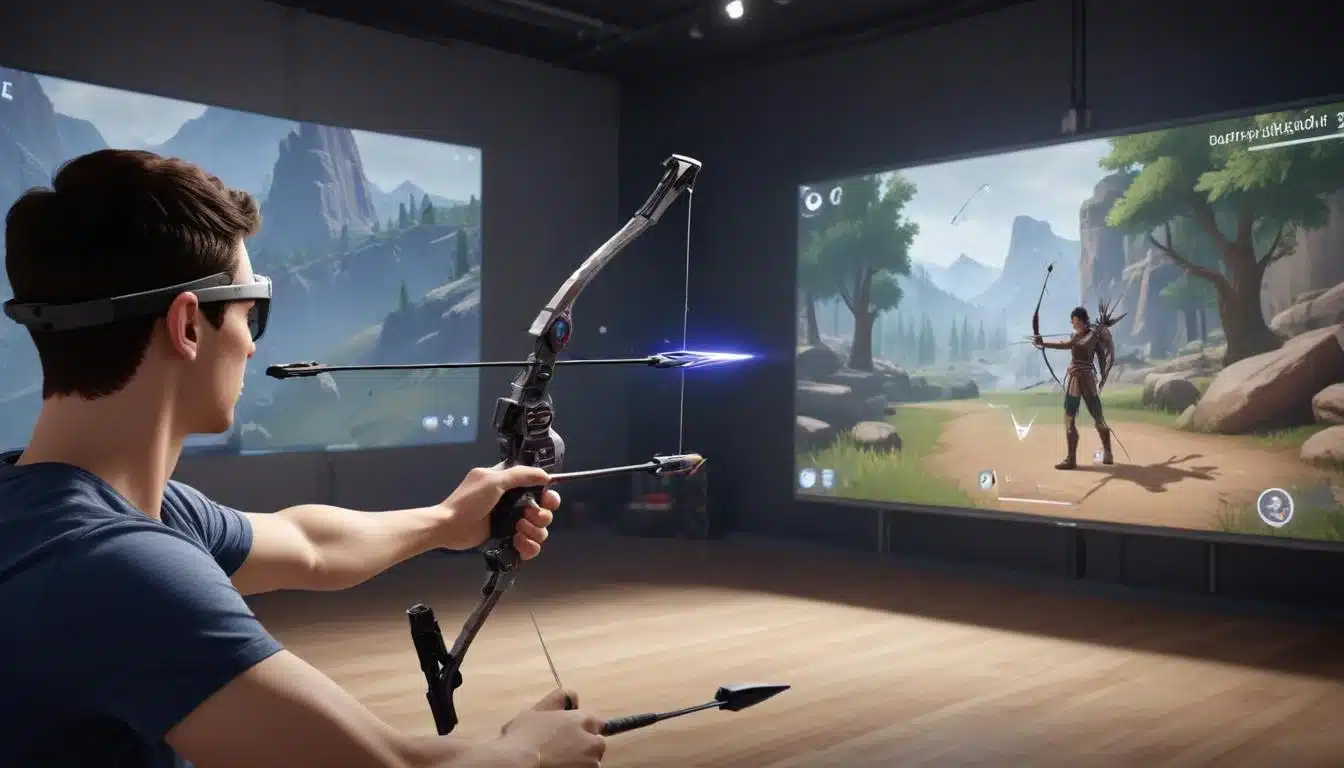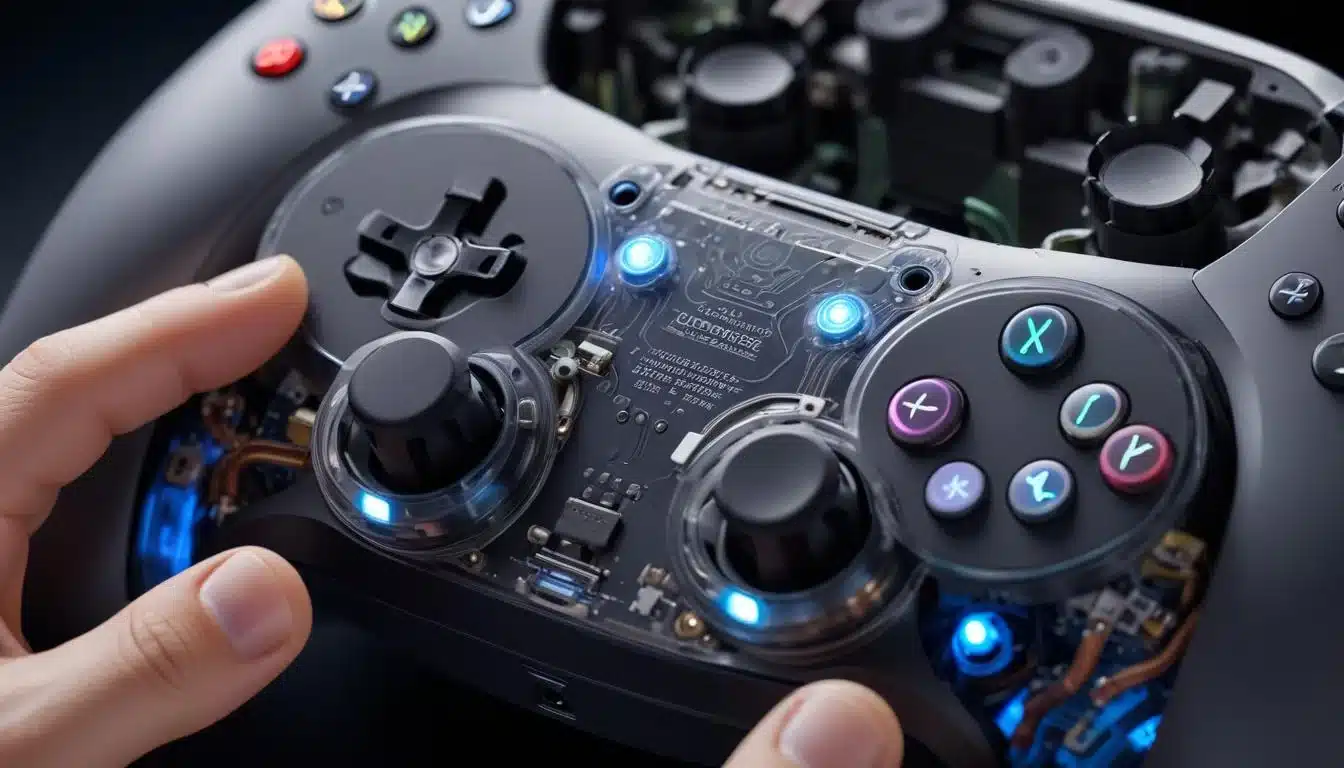DualSense Controller: Unveiling 5 Hidden Features for PS5

The PlayStation 5’s DualSense controller revolutionized gaming input; this article reveals five often-overlooked features that significantly enhance immersion and tactical gameplay on your console.
For PlayStation 5 enthusiasts, the DualSense controller represents a significant leap in gaming immersion. Beyond its striking design and core functionalities, the controller harbors several DualSense hidden features that many players might overlook. These subtle yet powerful enhancements are meticulously crafted to deepen your connection with virtual worlds, offering tactile feedback and nuanced interactions that redefine how you experience your favorite titles. Join us as we explore these five often-undiscovered capabilities, promising to elevate your PS5 gameplay to unprecedented levels of engagement and excitement.
Adaptive Triggers: Beyond Simple Resistance
The adaptive triggers of the DualSense controller are widely celebrated for their ability to simulate varying levels of force and tension, mimicking in-game actions like drawing a bowstring or firing a weapon. However, many players don’t realize the full extent of their programmable nuances. Developers can fine-tune these triggers to convey incredibly specific sensations, moving beyond mere resistance to deliver a spectrum of tactile information.
This goes beyond a simple on/off resistance. Imagine pulling the trigger of a shotgun, feeling a distinct ‘click’ before the heavy pull, or experiencing the gradual pressure build-up of a hydraulic system. These aren’t just predefined settings; they are dynamically adjusted by the game engine, offering a layer of physical feedback that traditional rumble motors simply cannot replicate. The precision allows for a much more intuitive understanding of in-game mechanics and weapon states.
Dynamic Tension Mapping
Developers can map specific in-game events to trigger tension curves. This means the resistance isn’t static; it can change based on factors like weapon durability, character stamina, or environmental conditions. A worn-out weapon might have a ‘stickier’ trigger, while a character running low on energy might find it harder to fully depress a sprint button. This adds a layer of realism and challenge that directly impacts gameplay strategy.
- Weapon Jamming Simulation: Feel the trigger resist and ‘catch’ when your in-game weapon jams, requiring a more forceful pull to clear it.
- Vehicle Handling Nuances: Experience varying resistance in accelerator and brake triggers based on terrain, vehicle damage, or speed.
- Environmental Interaction: Sense the effort required to pull a lever or open a heavy door through trigger feedback.
The true genius of adaptive triggers lies in their versatility. They are not merely an on-screen visual cue, but a physical manifestation of the game world in your hands. Mastering these subtle cues can provide a competitive edge, allowing for faster reactions and more informed decisions based on tactile feedback rather than solely visual or auditory input. This hidden depth encourages players to pay closer attention to how their controller feels, integrating it more fully into the gaming experience.
Advanced Haptic Feedback: The Art of Subtle Sensations
While the DualSense’s haptic feedback is often praised for its ability to simulate rain or footsteps, its true potential lies in conveying incredibly detailed and localized sensations. This isn’t just a generic vibration; it’s a highly sophisticated system capable of producing distinct textures, impacts, and even directional cues that immerse players on a microscopic level.
Think of it as a much more granular form of touch. Instead of a single, all-encompassing rumble, the haptic motors can activate independently and at varying intensities across the controller. This allows for a precise simulation of different surfaces a character walks on, the impact of individual raindrops, or the specific direction from which an enemy attack originates. It transforms abstract in-game events into tangible physical experiences.

Directional Impact Simulation
A lesser-known aspect of haptic feedback is its capacity for directional information. Games can utilize the haptic motors to give players a sense of where an impact or sound is coming from. If an enemy attacks from the left, the left side of the controller might vibrate more intensely, providing a subtle but effective spatial cue.
- Footstep Differentiation: Feel the difference between walking on gravel, wood, or metal through distinct haptic patterns.
- Elemental Effects: Experience the sensation of wind, water currents, or even the crackle of fire through specific vibrations.
- Localized Damage: Get a haptic cue on the specific part of the controller corresponding to where your character takes damage.
The subtle nature of advanced haptic feedback means it often operates subconsciously, enhancing immersion without overtly drawing attention to itself. It’s about feeling the crunch of snow underfoot, the gentle patter of rain on an umbrella, or the distant thud of an explosion reverberating through the ground. These are the details that build believable virtual worlds, and the DualSense delivers them with remarkable fidelity, making every interaction feel more real and impactful.
Integrated Microphone and Mute Button: More Than Just Chat
The DualSense controller features a built-in microphone and a dedicated mute button, primarily designed for seamless voice chat. However, some games ingeniously integrate this microphone into gameplay mechanics, turning it into an interactive input device rather than just a communication tool. This hidden feature opens up unique possibilities for player interaction and puzzle-solving.
Imagine a scenario where you need to blow into the microphone to extinguish a torch, or whisper a secret phrase to unlock a hidden passage. This functionality adds an unexpected layer of immersion, breaking the fourth wall and requiring players to interact with the game in a more physical and vocal manner. It’s a departure from traditional button presses, demanding a different kind of engagement.
Voice-Activated Puzzles
Certain developers have leveraged the integrated microphone for specific in-game puzzles or actions. This can range from simple voice commands to more complex interactions, where the tone or volume of your voice might influence an outcome. It forces players to think outside the box and utilize all available tools.
- Whispering to avoid detection: Some stealth games might require you to whisper into the mic to avoid alerting enemies.
- Blowing into the mic for environmental effects: Extinguish candles, cool down overheating objects, or activate wind-based mechanisms.
- Sound-based magic casting: Utter specific sounds or words to cast spells or abilities, adding a role-playing dimension.
The dedicated mute button is also more than just a convenience; it’s a tactical tool. Quickly silencing your microphone to prevent in-game sounds from being picked up during a tense moment or to have a private conversation without pausing the game is invaluable. This integrated communication suite, when creatively used by developers, transforms the controller into a more versatile and immersive instrument, adding unexpected depth to gameplay.
Motion Sensing: Beyond Simple Tilting
While motion controls might evoke memories of earlier console generations, the DualSense’s advanced accelerometers and gyroscopes offer significantly more precision and versatility. This hidden feature allows for nuanced input, enabling players to perform delicate actions or control aspects of the game world with subtle movements rather than just broad gestures. It’s about fine-tuning control.
The motion sensors are not just for steering vehicles or aiming weapons; they can be used for intricate tasks like balancing objects, controlling a character’s gaze, or even performing precise artistic movements in creative games. The sensitivity and accuracy of the DualSense’s motion tracking are far superior to previous iterations, allowing for a much richer range of interactive possibilities that feel natural and intuitive.

Contextual Motion Inputs
The beauty of the DualSense’s motion sensing lies in its contextual application. Developers can integrate motion controls in ways that feel organic and enhance specific gameplay scenarios, rather than forcing them upon every action. This leads to more intuitive and less cumbersome control schemes that complement traditional stick and button inputs.
- Fine-tuning aiming: Use subtle tilts to make micro-adjustments to your aiming reticle, especially in precision-based shooters or archery games.
- Balancing puzzles: Navigate intricate balancing acts or guide objects through mazes by tilting the controller with precision.
- Artistic expression: Utilize motion for painting, sculpting, or conducting music in creative applications, offering a more tactile interface.
The careful implementation of motion controls can elevate gameplay by making certain actions feel more physically engaging and intuitive. It’s not about replacing traditional controls but augmenting them, providing an alternative input method that can feel more natural for specific tasks. When done right, these motion-sensing capabilities become an invisible extension of the player’s will, enhancing the feeling of direct control over the game world.
Speaker Customization and Sound Direction: Audio Immersion Amplified
The DualSense controller’s built-in speaker is often used for simple audio cues, but its hidden potential lies in its ability to deliver localized sound effects and even directional audio, significantly enhancing immersion. This isn’t just about playing a sound; it’s about making that sound feel like it’s coming directly from the source within the game world, creating a more cohesive audio experience.
Imagine your character picking up an item, and the sound of that item being acquired emanates directly from the controller in your hands. Or hearing the distant crackle of a radio transmission that subtly shifts in volume and clarity as you move the controller. This subtle audio layering creates a sense of presence that traditional TV speakers or headsets alone cannot replicate, pulling you deeper into the game’s atmosphere.
Dynamic Audio Placement
Developers can dynamically route specific sound effects to the controller’s speaker, creating a sense of proximity and realism. This means crucial audio cues, like the click of a lock or a character’s internal monologue, can be delivered directly to the player’s hands, making them feel more immediate and personal.
- Localized Item Sounds: Hear the distinct sound of picking up a specific item or performing an action directly from the controller.
- Personalized Alerts: Receive subtle notifications or warnings that feel like they’re coming from your character’s immediate vicinity.
- Environmental Ambiance: Experience subtle environmental sounds, like dripping water or buzzing insects, as if they are right in your hands.
The ability to customize the volume and even the type of sounds coming from the controller speaker allows players to fine-tune their audio experience. This granular control over sound delivery helps to create a more intimate and immersive connection with the game, making the controller not just an input device, but an active participant in the game’s auditory landscape. It’s a powerful tool for developers to enhance storytelling and player engagement through sound.
Battery Life Optimization and Connectivity Tricks
While not a gameplay feature in the traditional sense, understanding the hidden aspects of the DualSense’s battery life and connectivity can significantly enhance your overall gaming experience, preventing interruptions and maximizing uptime. Many players simply plug in their controller when it dies, unaware of the subtle ways to extend its life or troubleshoot connection issues.
The DualSense, with its advanced haptics and adaptive triggers, is notoriously power-hungry. However, there are settings and habits that can significantly impact its endurance. Furthermore, knowing how to quickly re-pair or diagnose connection problems can save valuable gaming time. These aren’t flashy features, but practical knowledge that contributes to a smoother, more enjoyable PlayStation 5 experience.
Power-Saving Customizations
The PlayStation 5 system settings offer several options to optimize DualSense battery life. Dimming the light bar, reducing haptic intensity, and disabling the controller speaker can all contribute to longer play sessions. These adjustments can be made without significantly detracting from the immersive experience, especially if you prioritize raw playtime.
- Adjusting Light Bar Brightness: Reducing the intensity of the light bar can noticeably extend battery life without impacting gameplay.
- Disabling Controller Speaker: If external audio is preferred, turning off the controller speaker saves a significant amount of power.
- Haptic Feedback Intensity: While a core feature, reducing its intensity in game or system settings can provide longer play sessions.
Beyond battery life, understanding the DualSense’s connectivity is key. Knowing how to quickly switch between paired consoles or re-establish a connection after a firmware update can prevent frustration. The controller’s ability to remember multiple PS5s, for instance, is a convenience often overlooked. Managing these aspects effectively ensures that your gaming sessions are smooth and uninterrupted, allowing you to fully appreciate the controller’s more overt features without worrying about power or connection.
| Hidden Feature | Gameplay Enhancement |
|---|---|
| Dynamic Adaptive Triggers | Simulates variable tension for deeper interaction with in-game actions like weapon firing or vehicle controls. |
| Advanced Haptic Feedback | Delivers localized, textured vibrations for nuanced environmental and impact sensations. |
| Integrated Mic for Gameplay | Enables unique voice-activated puzzles and interactive elements, expanding input methods. |
| Precise Motion Sensing | Offers fine-tuned control for aiming, balancing, and creative inputs with subtle movements. |
Frequently Asked Questions About DualSense Features
Yes, the PlayStation 5 system settings allow you to adjust the intensity of both haptic feedback and adaptive trigger effects. This customization helps tailor the experience to your preference and can also contribute to extending the controller’s battery life. Some individual games might also offer in-game options for these settings.
Beyond standard voice chat, the DualSense’s microphone can be creatively used by developers for unique gameplay mechanics. This includes voice-activated puzzles, requiring players to blow into the mic for certain actions, or even whispering to avoid detection in stealth games, adding a new layer of immersion.
While the DualSense’s motion controls are highly precise for a standard game controller, offering nuanced input for various tasks, they are not designed to replicate the full 1:1 tracking fidelity of dedicated virtual reality controllers. They excel in augmenting traditional gameplay rather than replacing it for full VR experiences.
The DualSense speaker can indeed be used for localized and directional audio cues. Developers can route specific sound effects, like picking up an item or subtle environmental sounds, to the controller, creating a more immersive and spatially aware audio experience that complements the main sound system.
To optimize DualSense battery life, you can reduce the light bar’s brightness, decrease the intensity of haptic feedback and adaptive triggers, and disable the controller’s internal speaker if you prefer external audio. These settings can be adjusted directly within the PlayStation 5‘s system menu.
Conclusion
The DualSense controller is far more than just an input device; it’s an integral part of the PlayStation 5’s immersive ecosystem. By delving into these often-overlooked features—from the dynamic nuances of its adaptive triggers and the granular detail of its haptic feedback, to the creative potential of its integrated microphone, the precision of its motion sensing, and the subtle enhancements of its speaker—players can unlock a deeper, more personal connection with their games. Understanding and utilizing these hidden capabilities transforms the gaming experience from merely playing to truly living within virtual worlds. As developers continue to innovate, the DualSense promises to remain at the forefront of tactile and auditory immersion, ensuring every session on your PS5 is as engaging and surprising as possible.